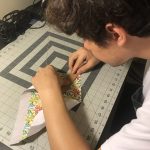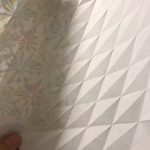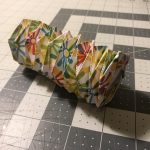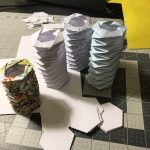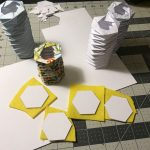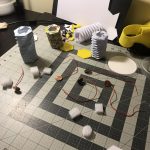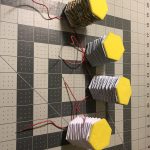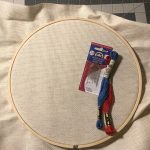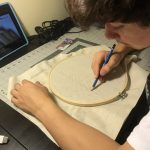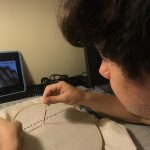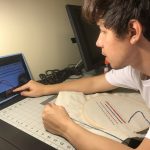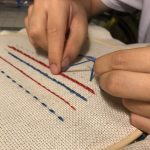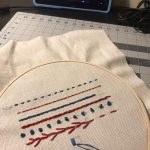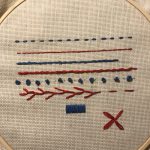Accordion Switch: A playful push-button made out of paper and foam.
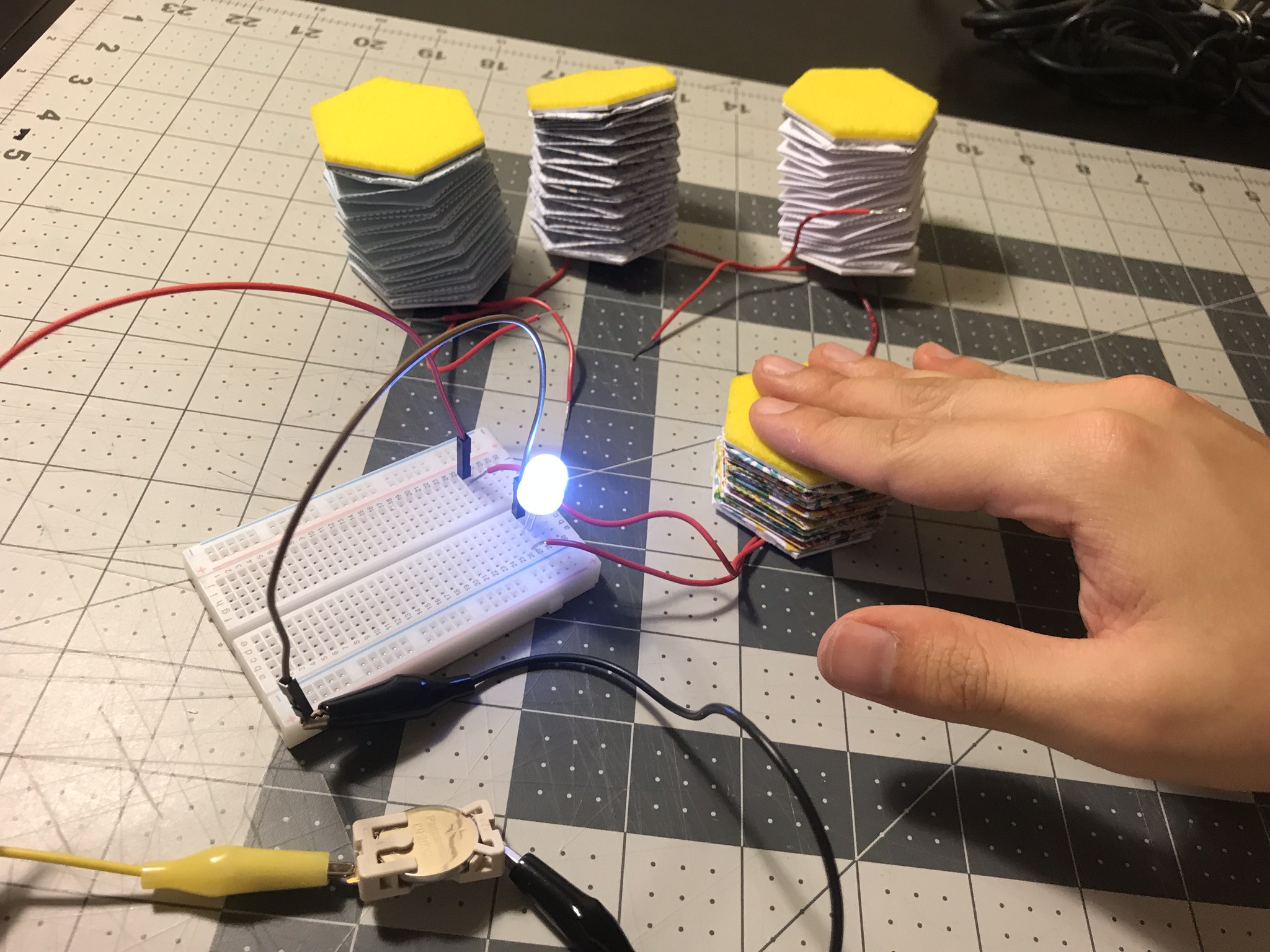
This switch explores a fun way to activate and control a circuit, by using the spring properties derived from forming intricate geometries with paper. The paper and the mechanism derived from the folding have ‘memory’ (return to the original state – usually all kind of elastics have memory), so the button can return to the initial position and state after is released, and therefore, opens the circuit. The key in this exercise is to use the properties of the materials without the need to add mechanisms or extra parts such as a spring. It is interesting how a non-elastic material can become elastic by modifying with various triggers, in this by changing the geometry. Can hard-flat materials, such as wood, metal and plastic become elastic by changing properties?
Materials:
- Paper with accordion template – Letter Size
- Conductive flat surface (I used cooper tape and coins)
- Foam for touch feedback (There is foam in the push surface and in the inside of the accordion to achieve a better physical feedback)
Construction:
The switch was made using paper engineering (template and design downloaded from https://www.robives.com/product/make-your-own-paper-squeeze-box-accordion/). This involves a complex and very persevering process of bending and gluing in different angles, as well as being able to find the right way to form the volumes. I had never worked with paper engineering, it is an exciting field, but one that requires a lot of time and patience (above all patience!!!).
The switch and the mechanism are simple; I used two conductive surfaces that allow the continuity of electricity. I also used different types of foam (at the top and inside) to provide physical feedback that is appropriate with the action of “pressing”.
References:
This project was inspired by the amazing work of the paper engineer and artist Rob Ives. I also was inspired by this visual reference of the popular goofy glasses with elastic eyes. What would be the interaction of a button that is constantly moving and that has a goofy appreciation? Perhaps an answer that goes against the principles of ‘good’ design (maybe?), but that explores affordances and interesting mechanisms for game …
New Craft Endeavor
The craft that I started learning and exploring was embroidery (I followed the tutorial on the basics of embroidery from this youtube video). It is interesting how I was surrounded all my life of this craft for the beautiful work of my grandmother, but I had never tried it. There is an emotional connection with textiles and embroidery that I find motivating to explore. In this particular case, I spent a very good of time doing it, it was not so difficult, and it was definitely relaxing. I want to continue exploring more and more types of increasingly complex stitches. It is amazing to see the work of people who work in this craft, and the potential this field has to be mixed it with other fields.

I consider myself a designer and maker. I am always thinking about exploring materiality and construction methods but having a conscious process that involves constant communication with a specific user. I’ve also been intrigued by hacking processes and materials, as an interesting way convert a design in a sustainable system, where the life of use of a product is not limited to its vital functionality, but to possible and innovative alternatives to revive it.
My favorite tool is the pencil. With it, I can capture and plan what the brain is producing. It is often difficult to represent these ideas, which are often abstract, in the brain itself. They have to validate with reality, and the easiest way is to communicate them through a pencil. I also love calipers. I use this measurement tool in my everyday as an Industrial Designer. It’s always on my side while I’m modeling in 3D or constructing models.
